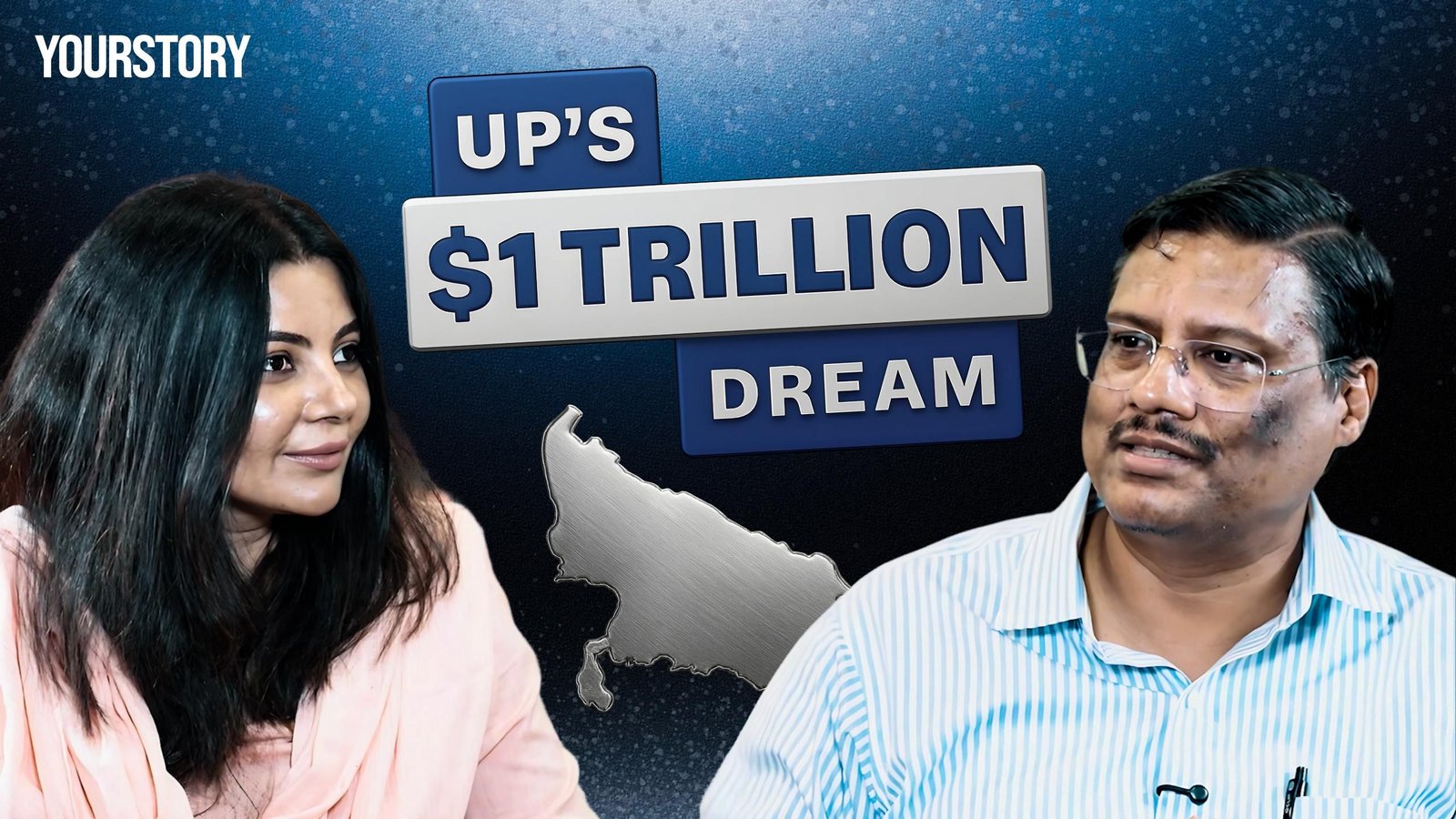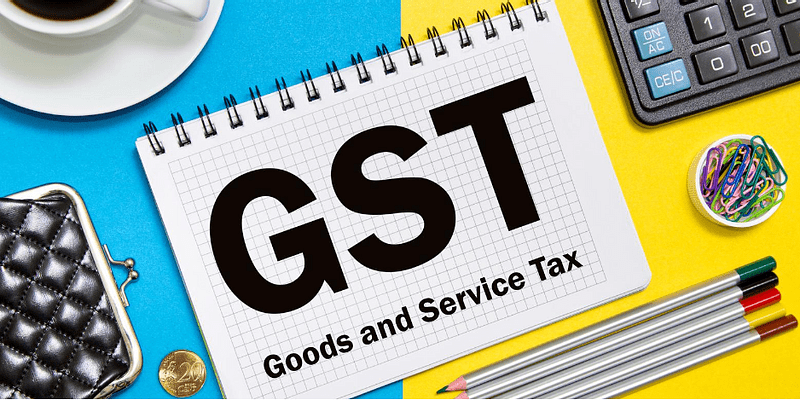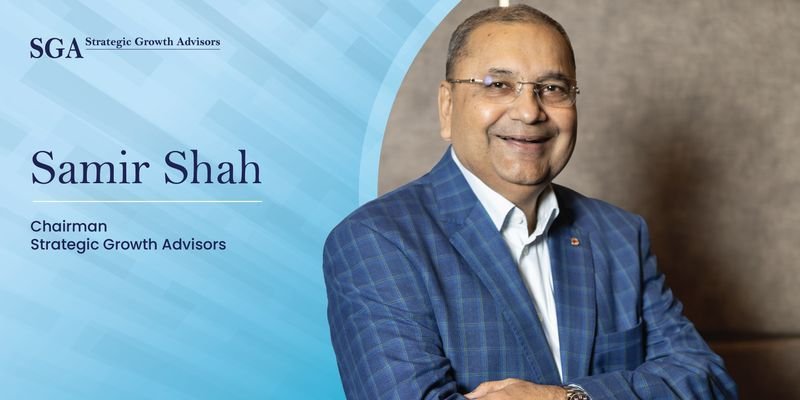Our major focus is to make state a trillion-dollar economy by 2029: UP’s top bureaucrat


“The challenge before us is how do we expand the economy?” said Kumar. “What are the enabling matters that the government should intervene in. What should be left to the private people? Where should we bring in other institutions like the banks, commercial institutions, export promotion…”
He said, “We are tapping all the means that are possible to ensure that the sectors grow at a very rapid pace, because this $1 trillion economy by 2029 is a very ambitious (goal).”
Perceptional change
It wasn’t long ago when Uttar Pradesh was widely perceived as a laggard among states with little growth momentum to show. Not anymore. “Perception-wise, we have moved up several notches,” Kumar said. “UP is in a state of great dynamism, very rapid movement, rapid growth. We have doubled our GDP over the last 6 years. Per capita incomes have also doubled.”
He mentioned that investors are now coming in large numbers. In 2015, for instance, about 500 new factories got registered. “Last year, we did about 4,000. And this year, we suppose we will touch 6,000-plus.”
The state has invested heavily in infrastructure. “If you look at the capital expenditure to the total budget expenditure, that ratio, UP is one of the best states.” Apart from having the largest network of expressways, it also boasts of the largest railway network as well as the highest number of airports in the country, he said.
“We have four functional international airports and the fifth one, the mother of all airports, is going to be commissioned in Jewar (Noida) sometime in October-November.”
<div class="externalHtml embed" contenteditable="false" data-val="”>
The right signals
Kumar said he is seeing a lot of momentum in the investment process. And, “This is across the state. Obviously, Greater Noida is the prime beneficiary, but I see it spreading across other parts of the state as well.”
Uttar Pradesh now has a brand-new industrial city, covering about 55,000 acres of land, located in Bundelkhand. “And along all these expressways, we are getting small land parcels for industrialisation.” Some 60,000-70,000 acres of land is now available with the state, ready to be given to industries at short notice.
Then, there are programmes such as the One District, One Product scheme, and Vishwakarma Shram Samman Yojana to help initiate the youth into entrepreneurship.
Kumar said, “The right strategy has to come from the leadership. And then you have to have the right execution, which has to come from the bureaucracy. And only when these two get intertwined that we get this kind of success.”
He said, “So, fortunately UP always had a very good set of officers, and if there is clear directions from the top, the UP bureaucracy has been shown multiple times in the past that whatever the political signals are there, they catch very fast and they execute it reasonably well.”
The MSME strength
Uttar Pradesh is also counting on its almost one crore MSME units. They have been there for ages, Kumar said. “Whether you look at the carpet industry of Bhadohi, the glass industry of Firozabad, the brass industry of Muradabad, the leather industry of Kanpur and Agra, these are predating 300-400 years. Let’s say the silk of Banaras, the brocade work, the ‘chikankari’ of Lucknow, these are not things that we have developed today. These are things that we had in our heritage.”
The difference, he said, is: “Now, we are pushing them forward. Somehow, we were not able to scale them, connect them. So, all those things have started changing. So, the government is reaching out to them with credit.”
The credit to MSMEs has tripled over the last 5 to 6 years, from Rs 86,000 crore to approximately Rs 3 lakh crore. “It’s not by accident. It is by design. So, credit, market access, technological upgradation, then giving them branding and packaging advice.”
“The chief minister was also talking about the UP international trade show. UP is the only state in the country that runs its international trade show, where it showcases the entirety of its products. We get buyers from all across the world to buy those products.” The third edition will be conducted by the end of October.
“And once they get connected globally, we will see the benefit.”
Ease of business
Regarding the perception that there is still a long way to go before India can compete with other countries on the ease of business markers, Kumar said, while there has been a huge improvement since 2014, “there are legacy issues, there are mindset issues.”
Uttar Pradesh, he said, is second among states in ease of doing business parameters. The Centre’s Jan Vishwas Bill is an attempt to decriminalise many of the offences. Further, Kumar spoke about digitisation and rationalisation.
“If you collect only three documents, why do you require 15 documents? So that is the part of rationalisation. And then there is a part of digitisation where Nivesh Mitra is a single window where people can get almost all their clearances. Of all the clearances that were applied, 97% of them got disposed of within the time limits that were set for those services.”
But challenges remain. Situations with other countries are not comparable, according to him. Kumar gave the example of constraints in land and labour markets, which are deeply complex. Protective laws, such as those preventing certain communities from easily selling agricultural land, were designed to safeguard vulnerable groups and cannot be dismantled overnight. There is, however, progress: he said labour reforms are progressing, restrictions on women working in hazardous industries have been lifted, inspection visits are being codified, and flexibility for businesses is improving.
Toward the goal
Kumar termed Uttar Pradesh an “incredibly complex state to govern.” He said, “It is a country of almost continental dimensions, both in terms of population and in terms of extent – from Noida to Ballia, from Saharanpur to Bundelkhand, and from Lalitpur to Ballia. There are different regions that have their own different environment of functioning. So, UP is really a combination of so many things.”
He continued, “It’s so mindbogglingly diverse that what may work in western UP may not work in eastern UP. What is working in eastern UP may not work in western UP and Bundelkhand and so on.”
The additional chief secretary also said he saw today’s youth being very aspirational. “Social well-being is also important, but economic well-being is gradually getting a greater mind share than what it used to get earlier. And what I see particularly in the youth, they are very aspirational. They want all the goodies of life. Yes. And they are impatient to achieve.”
When Uttar Pradesh announced the goal of a trillion-dollar economy, it was at $250 billion. Today, it’s at $330 billion. “It’s a work in progress,” said Kumar. But, “the momentum is picking up.”
Edited by Sriram Srinivasan
Discover more from News Hub
Subscribe to get the latest posts sent to your email.






